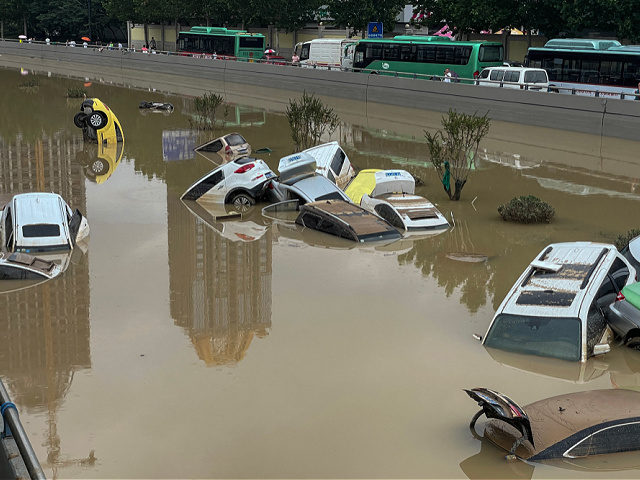Chinese national government officials are blaming local authorities in Zhengzhou and shaming them to act more decisively after at least 14 people died in the city’s subway system during torrential rains last week, China’s state-run Global Times reported Tuesday.
Videos of extensive flooding at subway stations and reports of officials refusing to believe loved ones when they reported people were still trapped in the system placed a spotlight on the Communist Party’s poor emergency response. Reports suggest many died because officials refused to evacuate the subways or issue flood warnings.
Speaking during a conference at China’s State Flood Control and Drought Relief Headquarters in Beijing on July 26, “Chinese Premier Li Keqiang urged for stricter response measures to be taken to enhance safety in densely populated cities such as on subways, in tunnels, and other underground spaces.”
Li is the premier of China’s State Council, which is the communist regime’s chief administrative authority.
“Decisive actions should be taken to suspend work, school, classes, and business operations except for special industries in case of emergencies,” Li stressed.
“Effective measures must be taken to ensure people’s safety in subways and tunnels, and these facilities should be shut down in a timely manner in case of emergencies,” he added.
Beijing’s municipal government on July 27 stressed “the delegation of the power to grass-root frontline personnel to deal with emergencies decisively and urged the resolute measures to be taken including suspending work, school, and subways in emergencies,” according to a report by the Beijing Daily.
The comments by central Chinese government officials come one week after a Zhengzhou subway line flooded on July 20, killing at least 14 passengers trapped inside a train car.
“[W]ater inundated Line 5 of the Zhengzhou Metro, one of the busiest lines in the city, forcing the train to stop between Shakou Road Station and Haitansi Station. More than 500 passengers on board were trapped in neck-deep water for nearly four hours. Fourteen people died after torrential rains flooded the subway,” the Global Times recalled on Tuesday.
Some passengers managed to upload short video clips to social media from inside flooded train cars in Zhengzhou on July 20. Some footage showed terrified people standing in chest- and neck-deep water as it continued to rise both inside and outside the train.
7月20日晚,郑州暴雨地铁5号线一车厢多人被困,水位淹过肩膀。根据郑州地铁晚上发布的消息,受持续暴雨影响,郑州地铁全线网车站已暂停运营服务,消防人员正在救援。 pic.twitter.com/wCiz7TGhki
— The Paper 澎湃新闻 (@thepapercn) July 20, 2021
Netizens on the Chinese microblogging platform Weibo have questioned why Zhengzhou authorities allowed the city’s subway lines to continue operating through July 20 when the metropolis, along with surrounding Henan province, had suffered from severe storms and record-breaking rainfall for days prior.
“Zhengzhou Metro must take the responsibility for the accident. It failed to make full preparations before the flood,” a July 26 Weibo post allegedly written by the widow of a subway flood victim read, according to the Global Times.
“[The Zhengzhou Metro] allowed Line 5 to operate while some other lines had been damaged by the flood; failed to evacuate passengers promptly after floods rushed into the line. This led to passengers being trapped for about an hour. It also failed to report the accident and launch rescue work in a timely way,” the post further read.
“It is still not clear whether there was a delay in the administrative procedure of the decision whether to suspend the subway, but a lesson we can learn from the tragedy is that related authorities in the Zhengzhou subway may decentralize power to the lower levels to ensure a quick response,” Wang Hongwei, a public administration professor at Renmin University of China in Beijing, told the Global Times on July 27.

COMMENTS
Please let us know if you're having issues with commenting.